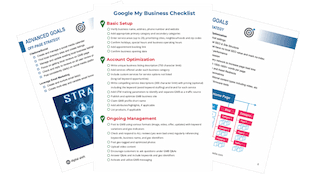Navboost
Navboost provides search signals that rely heavily on user clicks. Google's Navboost algorithm is an advanced search ranking algorithm that aims to enhance the user experience by improving the quality of search results related to navigation queries. It focuses on understanding the intent behind these queries and providing highly relevant and accurate results for navigation-based searches.
The Navboost system memorizes past clicks that have been issued for past queries. Navboost memorizes information for all queries received in the past 13 months. Prior to 2017, Navboost memorized this information for all queries received for 18 months.
Navboost performs a culling function, which is the process of segregating results from a group according to desired or undesired characteristics for search results.
Navboost combines various user signals and algorithms to determine the most appropriate results for navigation queries. It analyzes factors such as click-through rates, user behavior, website quality, relevance, and context to deliver improved search experiences. By understanding the user's intent to navigate to a specific website or resource, Navboost ensures that the search results prioritize accurate and helpful information for navigation-based searches.
"Glue" is another name for Navboost that includes all of the other features on the page. Navboost focuses on web results, and Glue does everything else that's on the page that's not web results.
Navboost "slices" data information by localization and mobile versus desktop - slicing here means that Navboost is creating different datasets for each of these categories.
The Navboost algorithm has significant implications for SEO professionals and website owners. Since its introduction, Google has been placing increased importance on delivering precise navigation results. This means that websites with well-structured navigation elements, clear information hierarchy, and easy-to-understand website structures are more likely to benefit from Navboost.
Interesting Findings and Case Studies
Although concrete data on Navboost's impact on SEO is limited, some interesting findings and case studies reveal its significance:
- NavBoost helps maintain search result quality. Manber Tr. 139:19-140:1. See id. at 122:16-123:12 (discussing an experiment that removed user click data from Google's NavBoost algorithm, which had a "significant [negative] impact" on search quality).
- Improved Navigation Results: Websites that provide clear navigation paths and logical site structures tend to rank higher, as Navboost values user-friendly interfaces.
- Enhanced User Experience: Navboost aims to refine navigation-oriented queries, providing users with more accurate search results and reducing the time it takes to find the desired information.
- Mobile and Voice Search Optimization: As mobile and voice searches continue to grow in popularity, Navboost becomes increasingly relevant. Optimizing navigation elements for mobile devices and voice search can help improve website visibility.
While there is limited detailed information available about Navboost, Google's emphasis on navigation queries and website user experience is evident in various presentations and documents. It is clear that website owners and SEO professionals should focus on optimizing their website's navigation structure and user interface to align with Google's intent to enhance navigation-related search experiences.
Based on best practices, it is recommended to prioritize the following aspects for optimal navigation-focused SEO:
- Clear Hierarchy: Ensure your website has a logical and easy-to-navigate structure, with intuitive menu systems, breadcrumb navigation, and clear categorization of content.
- Descriptive URLs: Use descriptive URLs that provide a clear indication of the page's content, making it easier for search engines to understand and rank appropriately.
- Internal Linking: Implement strategic internal linking to guide users and search engine crawlers through the website's various sections. Include relevant anchor text that accurately describes the linked content.
- Mobile-Friendly Design: Optimize your website for mobile devices, as more users access the internet through smartphones and tablets. Adopt responsive design principles to ensure smooth navigation on all devices.
- Site Speed: Improve your website's loading speed, as faster-loading sites tend to provide better user experiences. Optimize images, enable browser caching, and utilize content delivery networks (CDNs) to enhance performance.
It is crucial to stay updated with Google's algorithm updates and official announcements to adapt your SEO strategies accordingly. While Navboost remains relatively undisclosed, focusing on user-centric navigation experiences and staying compliant with Google's best practices will likely align your website with its objectives.
In conclusion, Google's Navboost algorithm aims to enhance the accuracy and relevance of navigation-oriented search queries. By optimizing your website's navigation structure, user interface, and following SEO best practices, you can positively impact your site's visibility and engagement for navigation-based searches.

